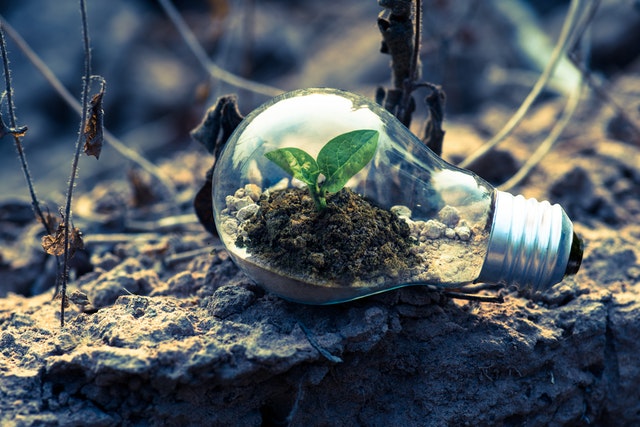
Going green as we reboot the economy
By Madeleine Cléroux technical documentation specialist and Aury Hathout M.Env, certified environmental auditor, Enviropass
Electronics Production / Materials Engineering Supply Chain design economy Editor Pick engineering environmental EU green tech regulation regulations RoHSMost electronic and electrical products contain hazardous substances - hence regulatory amendments

Source: Enviropass
As you know, the COVID-19 crisis has badly hit our Canadian economy. Restaurants, bars, stores, offices, and even some so-called ‘non-essential’ factories have closed temporarily… and sometimes for good. The economy has to recover, as it did after the 1929 stock market crash and the 2008 economic crisis. Technologies can play a fundamental role in this, especially when it comes to exporting Canadian high-quality electronic devices. To this end, many markets, such as the European Union, China, or California, are continually updating and creating new product environmental laws. Most of these regulations are mandatory, therefore can’t be eluded when rebuilding an export-oriented economy. Here are some of the latest ones.
Recently implemented regulations
Most electronic and electrical products contain hazardous substances. These substances are typically harmful to both our health and the environment, hence regulatory amendments and new laws to reduce the usage of these chemicals.
EU RoHS with 10 substances: The EU RoHS regulation, restricting the use of certain hazardous substances in electrical and electronic equipment (EEE), has been modified multiple times. Since a significant amendment in 2019, a total of 10 substances, with the addition of 4 phthalates, are restricted in most EEE:
- Lead (Pb) and its compounds
- Cadmium (Cd) and its compounds
- Mercury (Me) and its compounds
- Hexavalent chromium (Cr 6+)
- Polybrominated biphenyls (PBBs)
- Polybrominated diphenyl ethers (PBDEs)
- Butyl benzyl phthalate (BBP)
- Di-n-butyl phthalate (DBP)
- Di(2-exthylhexyl) phthalate (DEHP)
- Diisobutyl phthalate (DIBP)
EAEU and UAE RoHS: Armenia, Belarus, Kazakhstan, Kyrgyzstan, and Russia (EAEU RoHS), as well as the United Arab Emirates (UAE RoHS), have recently enacted RoHS-like regulations, with deviations from EU RoHS.
REACH of 209 SVHCs: Four new EU REACH Substances of Very High Concern (SVHC) were added in June 2020.
| New substances | Where used (examples) |
| Vinylimidazole | Paints, lacquers, surface treatment |
| Methylimidazole | Adhesives, plastic foams, metal products |
| Dibutylbis(pentane-2, 4-dionato-O,O’)tin | Adhesives, sealants, thinners, paint removers, and other applications. |
| Butyl 4-hydroxybenzoate | Cosmetics, personal care products, pharmaceuticals |
Among other things, REACH (Registration, Evaluation, Authorization and restriction of Chemicals) imposes the obligation to communicate any SVHC contained in a product, above certain thresholds.
Eco-design in external power supplies: Since the EU Directive 2009/125/CE on ecodesign requirements for energy-related products, various regulations have been impacting the following product categories:
- External power supplies
- Electronic displays
- Electric motors
- Light sources and separate control gears
- Welding equipment
- Power transformers
- Household refrigerators and vending machines
- Dishwashers
- Washing machines
Eco-design dedicates to producing sustainable goods in terms of resources and energy. Eco-design assesses and seeks to limit the potential environmental impacts of a product throughout its life. Energy efficiency is an essential requirement of all EU eco-design regulations.
Resulting from Directive 2009/125/CE, the regulation (EU) 2019/1782 on External Power Supplies came into effect in April 2020, with energy efficiency targets, as illustrated below:
| Po ≤ 49.0 W | Po > 49.0 W | |
| AC-AC external power supplies, except low voltage and multiple voltage output external power supplies | 0.21 W | 0.21 W |
| AC-DC external power supplies, except low voltage and multiple voltage output external power supplies | 0.10 W | 0.10 W |
| Low voltage external power supplies | 0.10 W | 0.21 W |
| Multiple voltage output external power supplies | 0.30 W | 0.30 W |
More in the Pipeline
On top of the previous updates, some brand-new requirements are shaking the electrical and electronic industry.
Eco-design, again! Two new significant eco-design rules will come into force in 2021:
- On Electronic Displays, under the regulation (EU) 2019/2021 which sets :
- Energy efficiency rates in standby, on and off modes;
- Marking of over 50 g plastic components; and
- Design obligations for repair and reuse. This last requirement must include the availability of spare parts, their maximum delivery time, and access to maintenance information.
- On Electric Motors, per the regulation (EU) 2019/1781, which also requires:
- Energy efficiency targets three types of engines ranked according to their efficiency: IE2, IE3, or IE4. For every engine, a maximum value is established, depending on the number of poles in the motors.
- Product information, which includes the efficiency level, the number of poles, the rates input frequency (Hz), and other eco-design details.
RoHS with 12 substances? On top of the ten above-mentioned restricted substances, seven have been under investigation for potential inclusion:
- Beryllium & its compounds
- Cobalt Dichloride & Cobalt Sulphate
- Diantimony Trioxide (flame retardant)
- Indium Phosphide
- Medium Chain Chlorinated Paraffins (MCCPs)
- Nickel Sulphate & Nickel Sulfamate
- Tetrabromobisphenol A (TBBP-A)
MCCPs and TBBP-A were recommended on April 27, 2020. If accepted, at least 12 substances may be restricted under RoHS, probably in 2023.
Keep an Eye Out
These product compliance requirements suggest that the world is betting on a greener economy.
Most recently, Canada, Finland, and the Netherlands have joined forces to develop a circular economy. For instance, the three countries committed to hosting three events and discussing the benefits of a circular economy for the future in the context of climate change. The circular economy concept consists of constantly reusing and recycling the same materials. Both the eco-design and the reduction of hazardous substances in electronic products contribute to a more circular economy by enabling better recyclability rates.
Such product environmental initiatives will likely continue to expand. As a manufacturer, it is critical to monitor them, secure your access to markets, and even gain competitive advantage.
